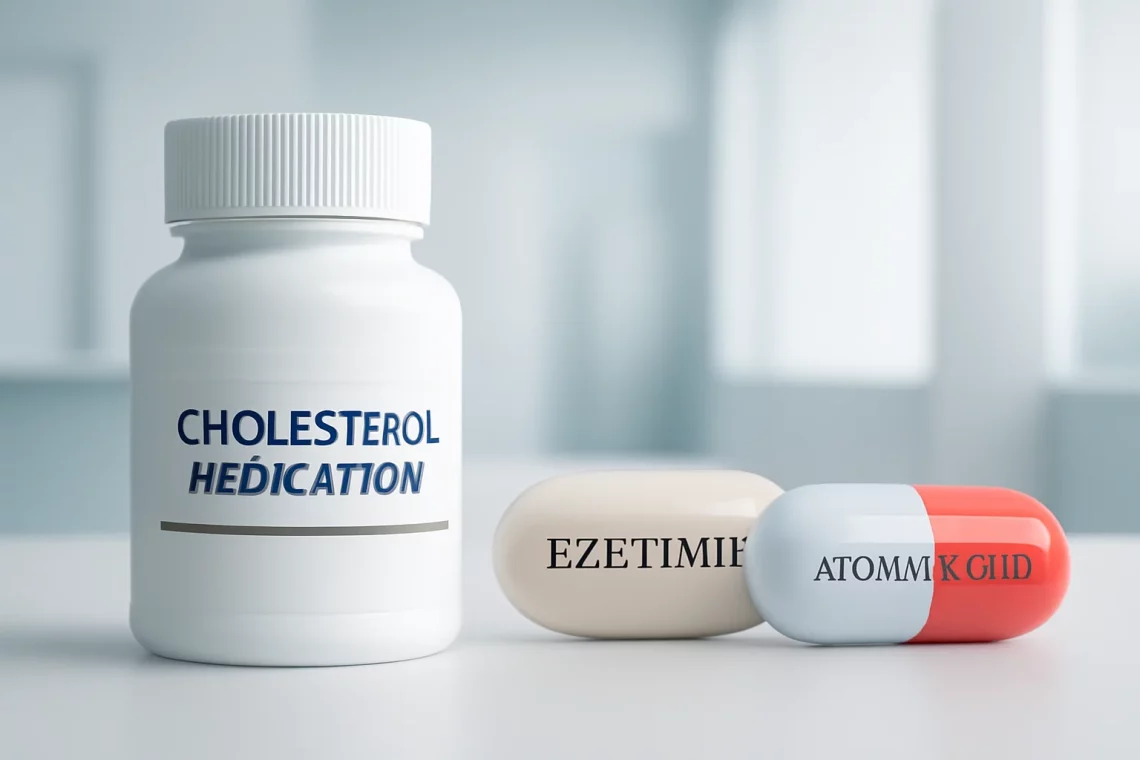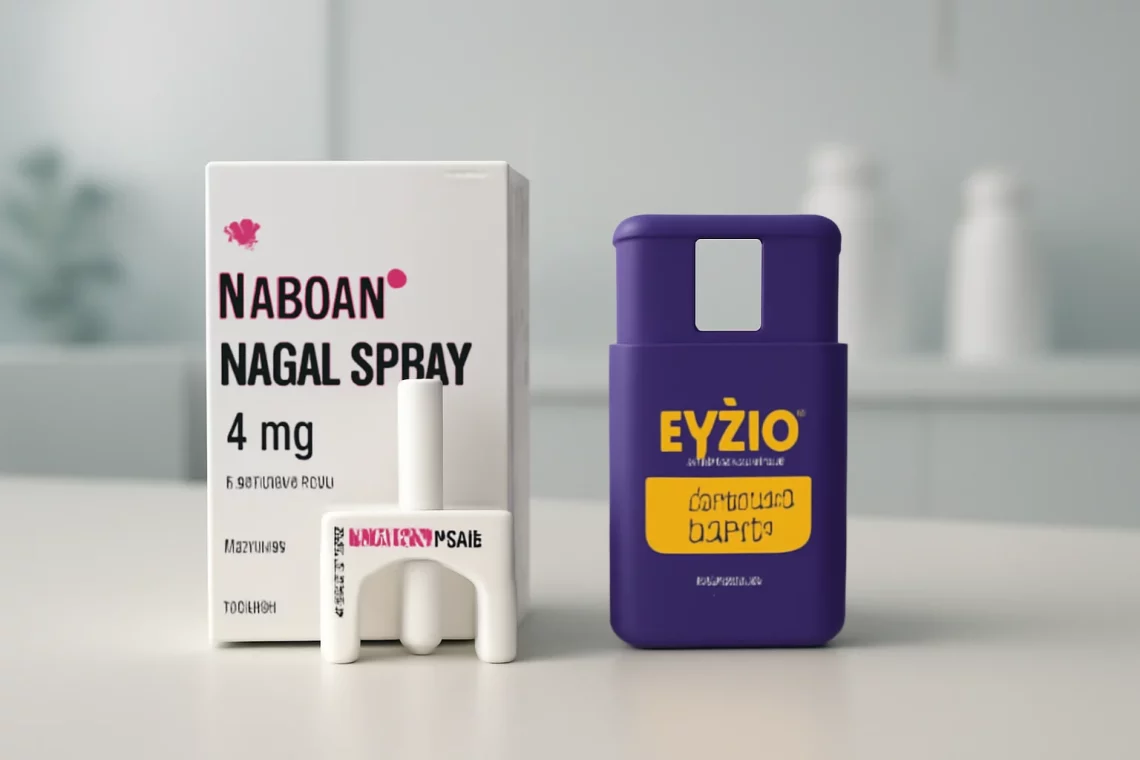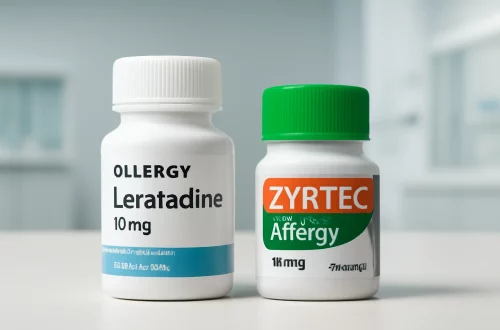Health
-
Ezetimibe vs Atorvastatin: Which Cholesterol Medication is Right for You?
Ezetimibe and atorvastatin are two widely used medications that play a crucial role in managing cholesterol levels and reducing the risk of cardiovascular diseases. As heart disease remains a leading cause of morbidity and mortality worldwide, the importance of effective cholesterol-lowering strategies cannot be overstated. Both medications target lipid metabolism but through different mechanisms, which can lead to varying effects and outcomes for patients. Understanding the distinctions between these two drugs is essential for both healthcare professionals and patients alike, as it enables informed decisions regarding treatment options. Ezetimibe is primarily known for its ability to inhibit the absorption of cholesterol in the intestines, while atorvastatin is classified as a…
-
Vraylar vs Risperdal: Understanding the Differences and Uses
Vraylar and Risperdal are two medications commonly used in the treatment of mental health disorders. They belong to a class of drugs known as atypical antipsychotics, which are designed to manage symptoms of conditions such as schizophrenia and bipolar disorder. Both medications have unique properties, efficacy profiles, and side effects, making them suitable for different patient needs. Understanding the intricacies of each medication is essential for patients, caregivers, and healthcare professionals. Vraylar, also known by its generic name cariprazine, has gained attention for its unique mechanism of action that targets specific dopamine receptors in the brain. On the other hand, Risperdal, or risperidone, has been a long-standing treatment option with…
-
Narcan vs Evzio: A Comprehensive Comparison of Opioid Overdose Remedies
The opioid crisis has become a significant public health issue, affecting countless individuals and communities worldwide. As the number of opioid overdoses continues to rise, the need for effective emergency interventions has never been more pressing. Among the most talked-about solutions in this battle are Narcan and Evzio, two medications designed to rapidly reverse the effects of opioid overdose. Both products are designed to provide immediate assistance in life-threatening situations, potentially saving lives when every second counts. Understanding the differences, mechanisms, and implications of using Narcan and Evzio can empower not only healthcare professionals but also family members, friends, and bystanders to act decisively in emergencies. The accessibility of these…
-
Entresto vs Carvedilol: A Comprehensive Comparison for Heart Health
Entresto and Carvedilol are two medications commonly used in the management of heart-related conditions, particularly heart failure. Both drugs, while serving similar purposes, have distinct mechanisms of action and therapeutic effects. As heart disease remains one of the leading health issues globally, understanding the nuances between these two medications can be crucial for patients and healthcare providers alike. Entresto, a combination of sacubitril and valsartan, is a relatively newer medication that has gained attention for its ability to reduce hospitalizations and improve outcomes in patients with heart failure with reduced ejection fraction. On the other hand, Carvedilol, a non-selective beta-blocker with alpha-blocking properties, has been a staple in heart failure…
-
Azithromycin vs Clindamycin: Key Differences and Uses Explained
Azithromycin and clindamycin are two widely used antibiotics that play a crucial role in treating various bacterial infections. Though they belong to different classes of antibiotics and have distinct mechanisms of action, both are effective in their respective applications. Understanding the differences and similarities between these two medications is essential for healthcare professionals and patients alike. This knowledge can help in selecting the right antibiotic based on the type of infection, the patient’s medical history, and potential drug interactions. Antibiotics like azithromycin and clindamycin work by inhibiting bacterial growth, but they do so in different ways. Azithromycin is a macrolide antibiotic, while clindamycin belongs to the lincosamide class. Each antibiotic…
-
Methadone vs Sublocade: Choosing the Right Treatment for Opioid Addiction
The opioid epidemic has prompted a greater focus on effective treatments for opioid use disorder (OUD). As healthcare providers and patients seek solutions, various medications have emerged to address the complexities of addiction. Among these, methadone and Sublocade have gained prominence. While both are used in the treatment of OUD, they offer different mechanisms of action, administration methods, and patient experiences. Understanding these differences is crucial for patients, caregivers, and healthcare professionals alike. The choice between methadone and Sublocade can significantly impact a patient’s recovery journey, influencing everything from adherence to overall quality of life. With the rising importance of personalized medicine, it is imperative to explore these treatment options…
-
Adderall vs Concerta: Which ADHD Medication is Right for You?
Adderall and Concerta are two well-known medications commonly prescribed for the treatment of Attention Deficit Hyperactivity Disorder (ADHD). Both drugs belong to a category of medications known as stimulants, which work by altering the levels of certain neurotransmitters in the brain to help improve focus, attention, and impulse control. While they share a common goal of managing ADHD symptoms, their chemical compositions, effects, and potential side effects can differ significantly. Understanding the nuances between Adderall and Concerta can be crucial for patients and caregivers navigating treatment options. The choice between these medications often depends on individual responses, lifestyle considerations, and specific symptoms. As ADHD awareness continues to grow, so does…
-
Allopurinol vs Febuxostat: Which is the Better Gout Treatment?
Gout is a form of inflammatory arthritis characterized by sudden and severe pain, swelling, and redness in the joints, often affecting the big toe. It occurs when there is an excess of uric acid in the bloodstream, leading to the formation of urate crystals in the joints. This condition can significantly impact the quality of life, making daily activities challenging and painful. As a consequence, managing gout effectively is essential for those affected by it. Two commonly prescribed medications for the management of gout are allopurinol and febuxostat. Both drugs serve to lower uric acid levels in the blood, thereby preventing gout attacks and facilitating better control of the condition.…
-
Benzonatate vs Dextromethorphan: Which Cough Suppressant is Better?
The world of cough medications is vast, encompassing a variety of options designed to alleviate symptoms associated with respiratory conditions. Among these, Benzonatate and Dextromethorphan stand out as popular choices for managing cough. Understanding the differences between these two medications is crucial for anyone seeking effective relief. Benzonatate is a non-narcotic cough suppressant that works by numbing the throat and lungs, reducing the cough reflex. On the other hand, Dextromethorphan, an ingredient found in many over-the-counter cough medications, acts on the brain’s cough center to suppress the urge to cough. Both medications have their unique benefits and potential side effects, making it essential to explore their characteristics, uses, and how…
-
Fentanyl vs Butrans: Understanding Their Differences and Uses
Fentanyl and Butrans are two powerful medications commonly used in pain management, yet they differ significantly in their composition, application, and effects on the body. As the opioid crisis continues to raise awareness around the use of narcotics, understanding the distinctions between these two substances becomes increasingly vital. Fentanyl, a synthetic opioid, is known for its potency and rapid onset of action. It is often prescribed for severe pain, particularly in cancer patients or those recovering from surgery. However, its high potential for addiction and overdose has made it a controversial choice in the realm of pain management. On the other hand, Butrans, which contains buprenorphine, is a partial opioid…






































